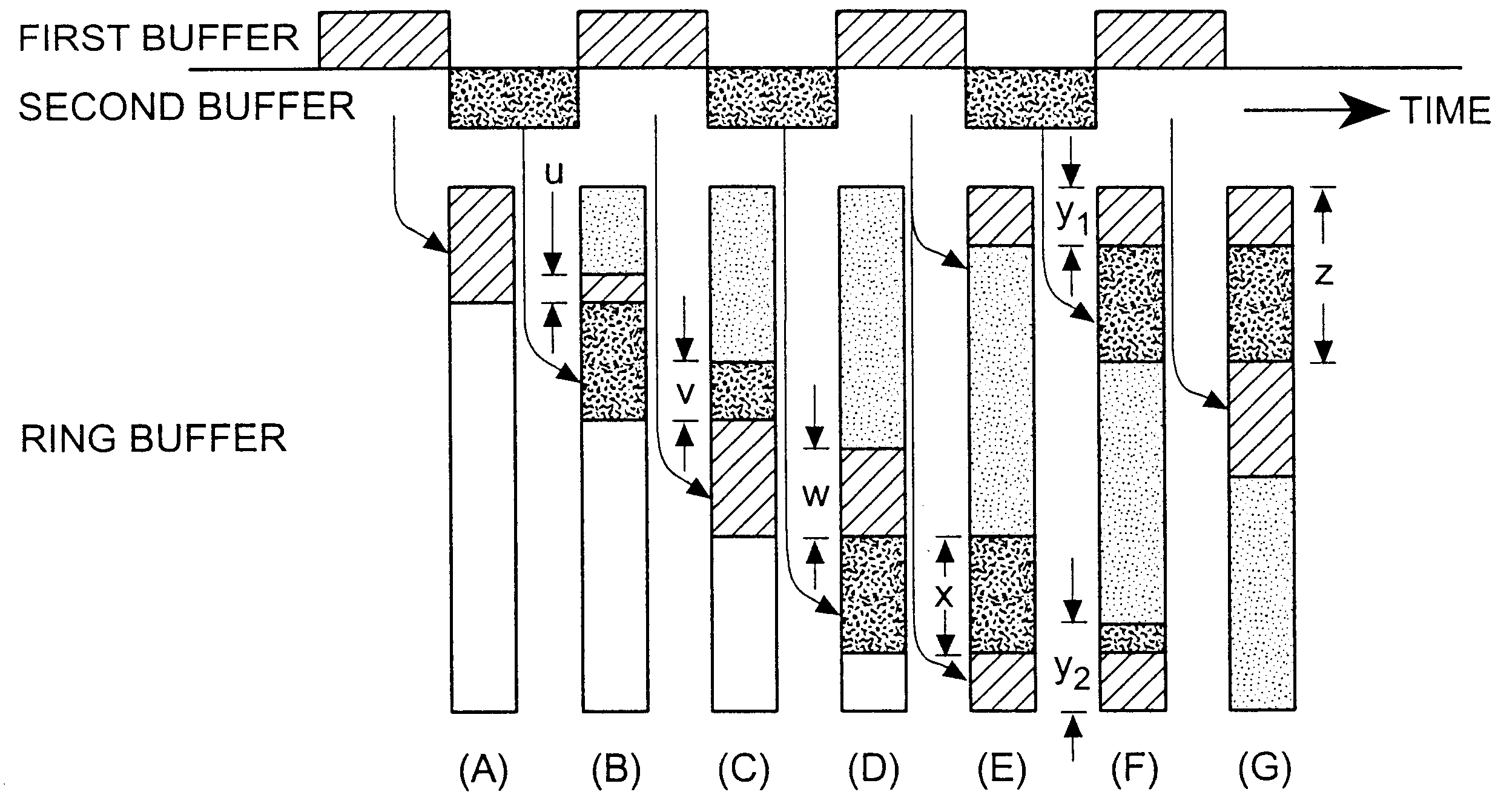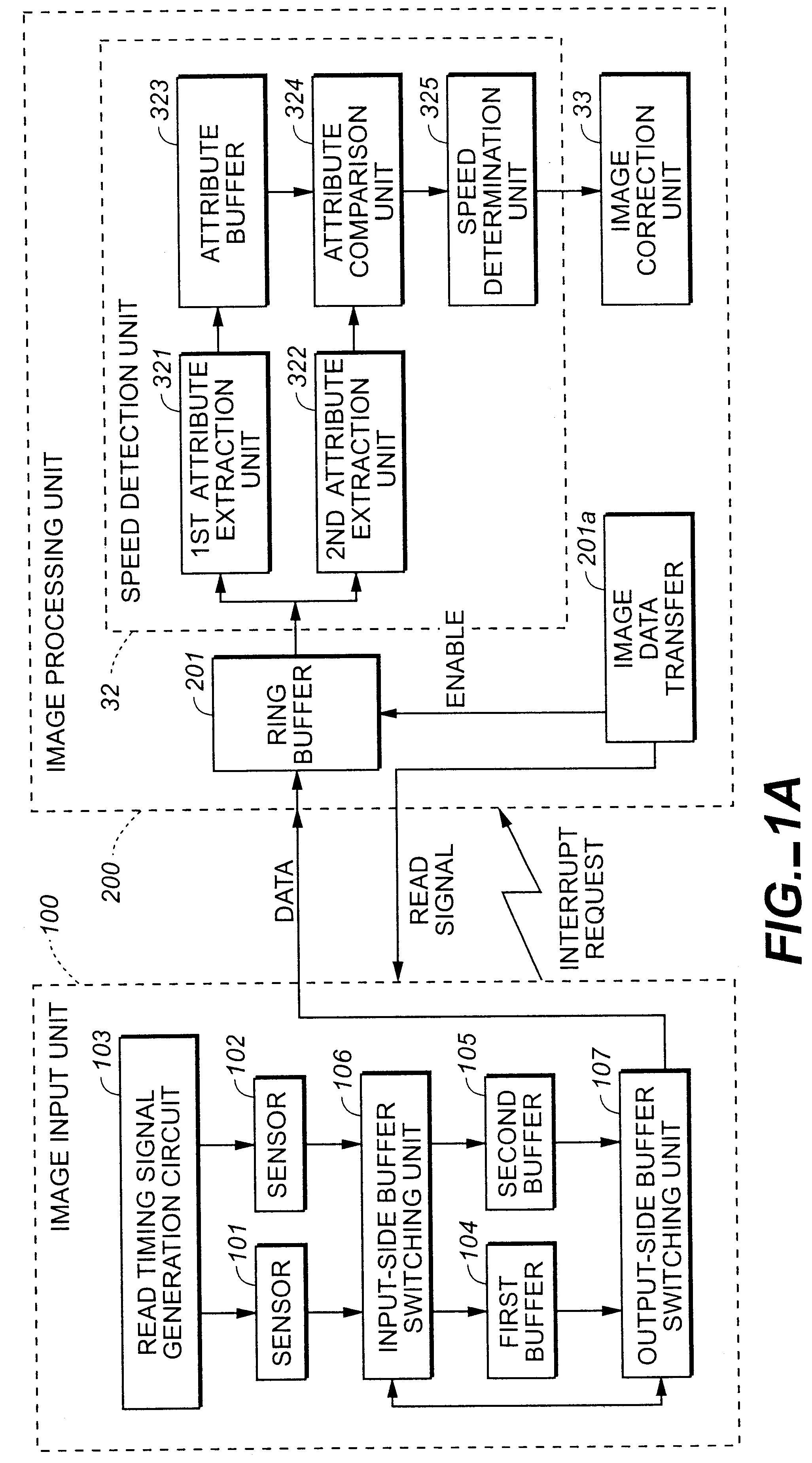Information input device
a technology of information input and input device, which is applied in the field of information input device and, can solve the problems of inability to determine distance, inability to read accurate images that correspond to scanning speed, and difficulty in maintaining firm contact with images by operators
- Summary
- Abstract
- Description
- Claims
- Application Information
AI Technical Summary
Problems solved by technology
Method used
Image
Examples
first embodiment
An overview of the operation of an information input device possessing such a configuration is as follows. Problems such as distortion in the image data read by image input unit 100 are corrected by image processing unit 200. (Processing operation up to this point is identical to that explained in the first embodiment). After this corrected image data is stored in the second ring buffer 400, character recognition unit 300 reads the corrected data from the second ring buffer 400, uses character extraction unit 301 to extract characters from the image data, and uses character code generation unit 302 to generate character codes matching those characters.
This overall operation is further explained with reference to the flow chart shown in FIG. 7.
In FIG. 7, assuming buffer 104 is to be filled first, control begins at step s21 within the image input area and remains until a preset amount of image data has been placed in buffer 104. Thereafter, control passes to step s22, in which buffer ...
second embodiment
Meanwhile, at step s25, the image input area of the second embodiment is filling the contents of buffer 105 with newly acquired image data. As before, processing remains at this step until the image input area perceives the second buffer 105 to be full enough for image data transfer to resume. Thereafter, control passes to step s26, where buffer switching complementing the switches made in step s22 is performed. At step s27, the first buffer 104 begins receiving image data, and at the same time an image data transfer interrupt request is sent to image processing unit 200. Image processing unit 200 receives this interrupt request and now accepts the image data from the second buffer 105. This process is repeated until all scanned image data has been received. Note that the image data transfer interrupt request is also issued to character recognition unit 300. This point will be explained further below.
Image processing unit 200 interrupts the image correction it has been performing wh...
PUM
 Login to view more
Login to view more Abstract
Description
Claims
Application Information
 Login to view more
Login to view more - R&D Engineer
- R&D Manager
- IP Professional
- Industry Leading Data Capabilities
- Powerful AI technology
- Patent DNA Extraction
Browse by: Latest US Patents, China's latest patents, Technical Efficacy Thesaurus, Application Domain, Technology Topic.
© 2024 PatSnap. All rights reserved.Legal|Privacy policy|Modern Slavery Act Transparency Statement|Sitemap



